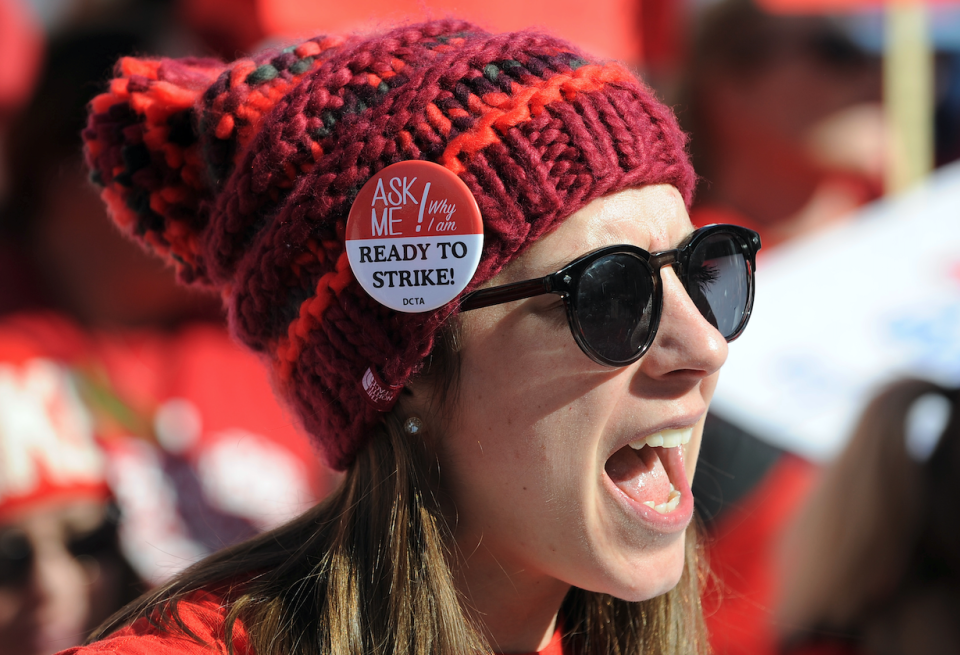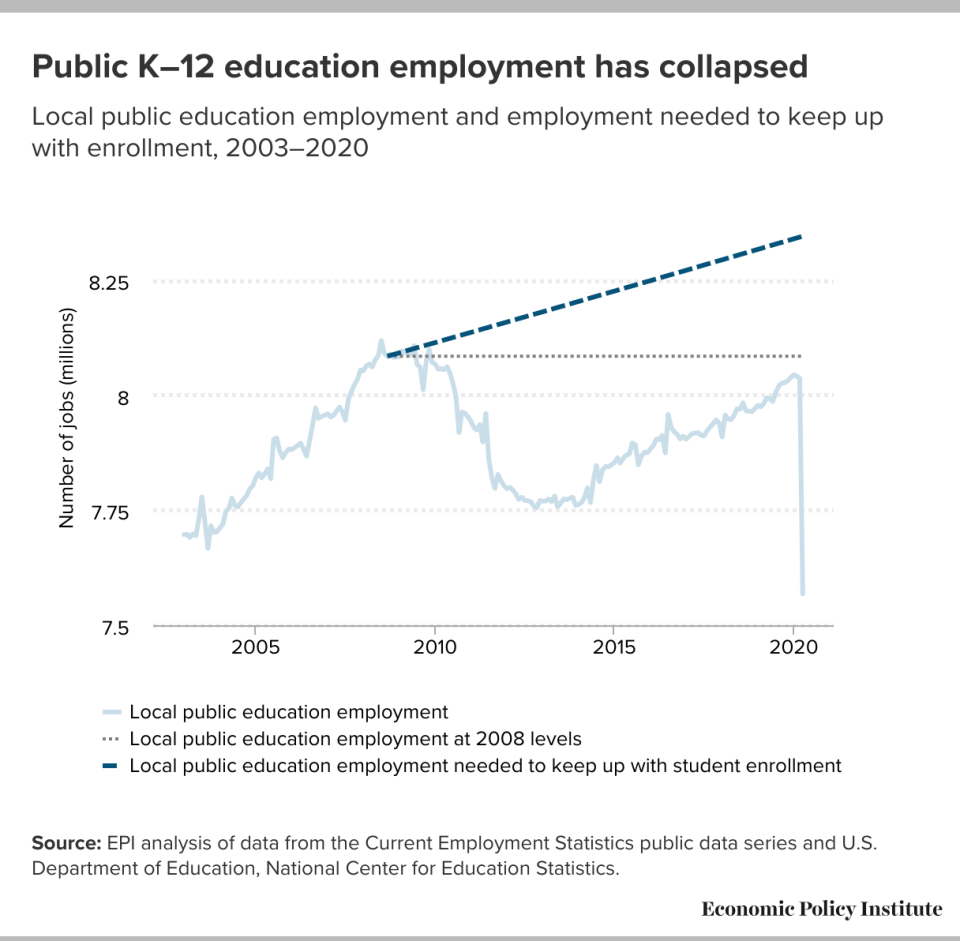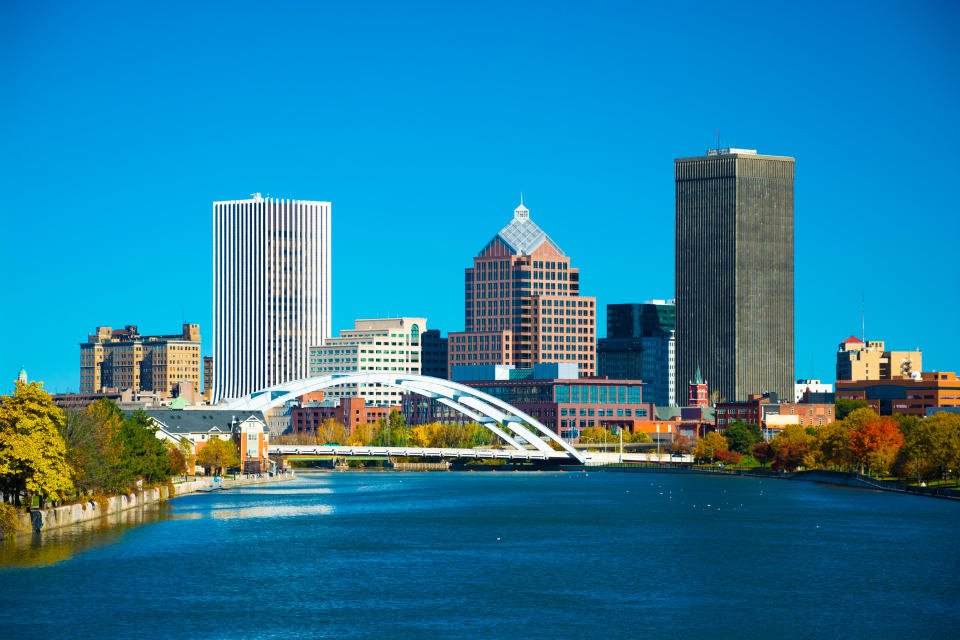The American teacher crisis is getting rapidly worse amid coronavirus pandemic
Tom Rossiter got the official notice on June 1.
The 33-year-old teacher, who taught seventh and eighth grade math at the Rochester City School District in Rochester, New York, was told that he was being let go at the end of the school year. His school district had been struggling with a $150 million budget deficit since December, and the coronavirus pandemic put the final nail in the coffin.
“It’s completely unfair and unjust to take financial problems of adults and put this on our children,” Rossiter said in an interview with Yahoo Finance.
Rossiter’s plight is mirrored across the country. America already had a teacher shortage going into 2020, and the coronavirus pandemic made the issue much, much worse.

‘I’m pretty sure this was unprecedented’
Education jobs accounted for two-thirds of the 585,000 government jobs lost in May, according to the most recent report. In April, 469,000 public school district personnel across the country — K-12 teachers and other school employees — lost their jobs.
In the wake of the 2008 Financial Crisis, nearly 300,000 jobs were shed from the public education sector, according to one estimate. In two months amid the coronavirus-induced economic crisis of 2020, around 750,000 public school teachers and other school employees in local areas have been laid off, according to one estimate by the American Federation of Teachers.
“I’m pretty sure this was unprecedented,” Michael Madowitz, an economist at the Center for American Progress, told Yahoo Finance. “We’re already past the total state and local job losses of the last recession.”

And the problem now is that if the federal government does not provide states with the aid that they desperately need, a lot of re-hiring looks unlikely.
“What’s really scary about this … it took almost a decade for states to make up for their job cuts in the last recession,” Madowitz said. If state and local governments are not bailed out by the federal government, “it’s really hard to see these jobs coming back.”
American Federation of Teachers President Randi Weingarten urged the federal government to provide financial help.
“There are no magic fixes for this economy — only a path to recovery if we keep up the stimulus and investments to fund, rather than forfeit, the future,” Weingarten, leader of the country’s second-largest teachers union, said in a statement. “We urgently need the federal funding... If we fail to act, essential services will be gutted, schools won't be able to reopen and public employees will stay laid off.”
Teacher shortages across the country
Even if the state and local governments manage to get back to pre-pandemic employment levels, it’s “still significantly below where they should have been to keep up with student enrollment,” Economic Policy Institute’s Elise Gould wrote in a note on June 3.
According to a September 2019 report by the Alabama State Department of Education’s Teacher Shortage Task Force, “local systems are experiencing great difficulty locating certified teachers to fill open positions in their systems.”

In Minnesota, between 2017-18, 41.9% of school districts reported that they were facing a ‘serious problem’ with the shortage of teachers, and 12.7% reported that they had to cancel classes or programs due to the lack of teachers.
Furthermore, “the education sector is in a holding pattern as schools determine how to adjust expectations and plans for educating students in the fall amid an ongoing pandemic,” Daniel Zhao, senior economist at Glassdoor, told Yahoo Finance.
‘That’s devastating to have to tell kids’
In Rochester, Rossiter had been teaching remotely since the school shut down. He worried about his students handling a sub-optimal learning environment.
“Every single teacher wants to be teaching face-to-face... no teacher wants to teach online,” Rossiter said, noting that he layoffs were ongoing. “Those teachers [laid off] have relationships with every kid in their classroom, and has spent time, building trust and relationships with those kids. That’s devastating to have to tell kids.”

Rossiter noted that a third of the population in Rochester lives below the poverty line, a figure much higher than the national average of 13.1%.
“The vast majority of my students are black and Hispanic,” Rossiter noted. And since many of those students come from disadvantaged backgrounds, “any state budget changes in education is predominantly hitting those kids ... which is in my mind, completely unjust, and a detriment to society.”
-
Aarthi Swaminathan is a reporter for Yahoo Finance.
Read more:
‘I was misled’: Public school teacher tells Congress about student debt nightmare
'It’s a freaking circus': Unemployed Americans share tales of an overloaded system
'Struggling so severely': Coronavirus exposes the gulf between the haves and have-nots
Read the latest financial and business news from Yahoo Finance
Follow Yahoo Finance on Twitter, Facebook, Instagram, Flipboard, SmartNews, LinkedIn,YouTube, and reddit.

